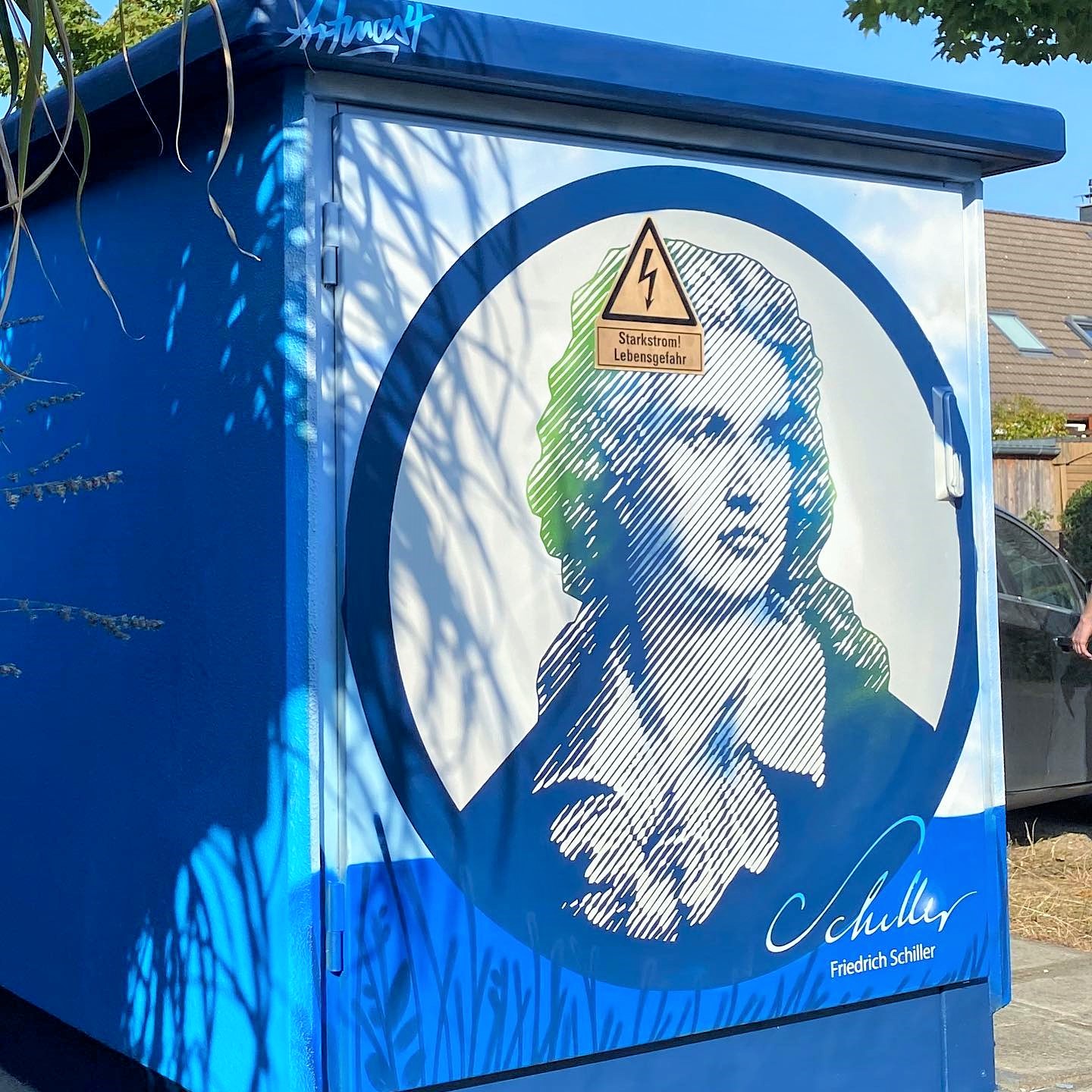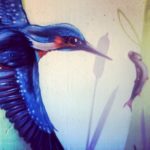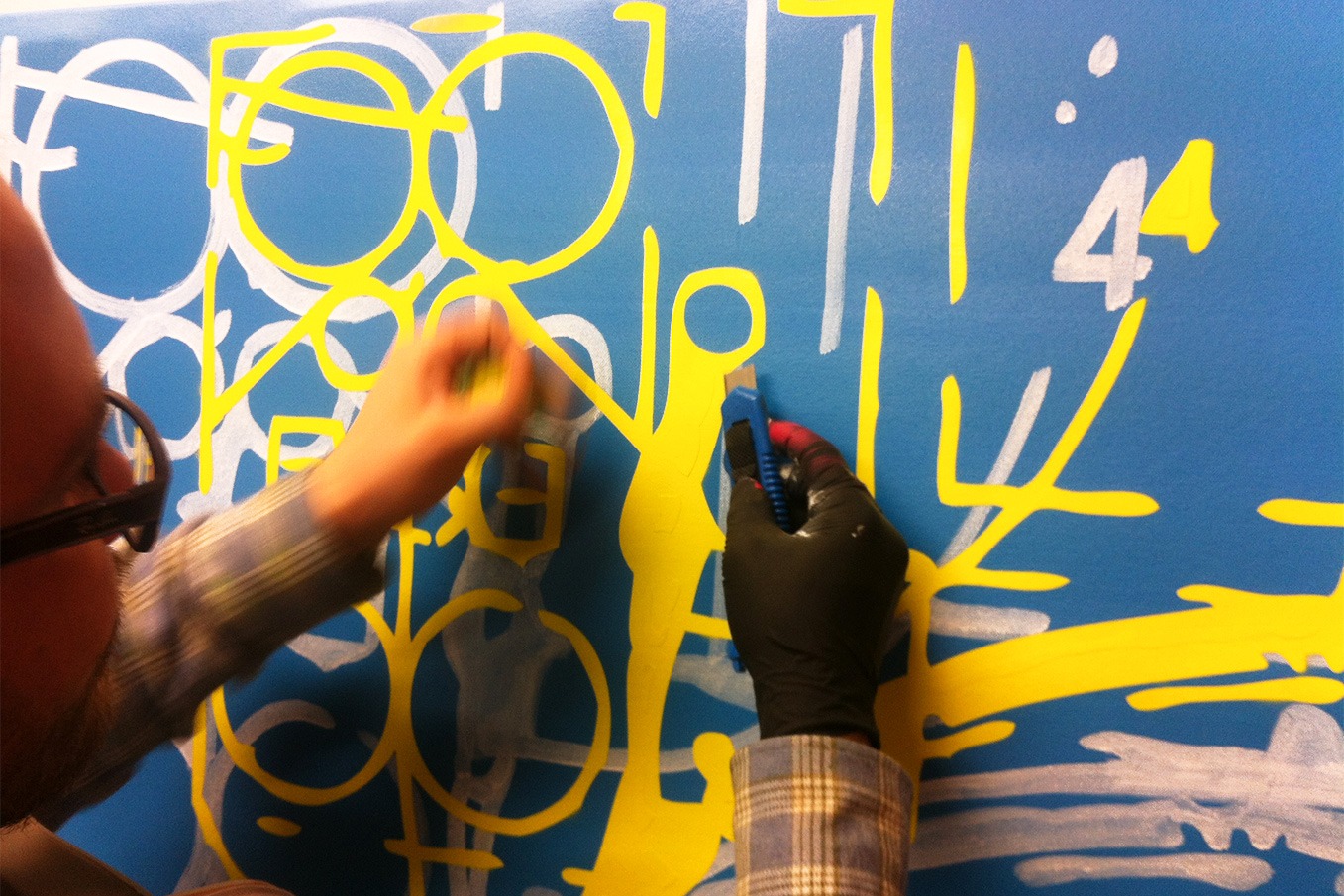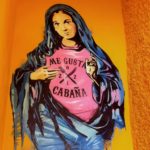The graffiti artist and graphic designer Marcus Dörr has been active with spray cans since 1992, initially under his sprayer name BFREE, later additionally under the name of his founded graphics agency Artmos4. A play on words for “Atmosphere” and “Art” and the German word for the number 4. So pronounced “Artmos-phere”. And that’s exactly what the team creates with Marcus as the executive artist. True to the motto: We create atmosphere.
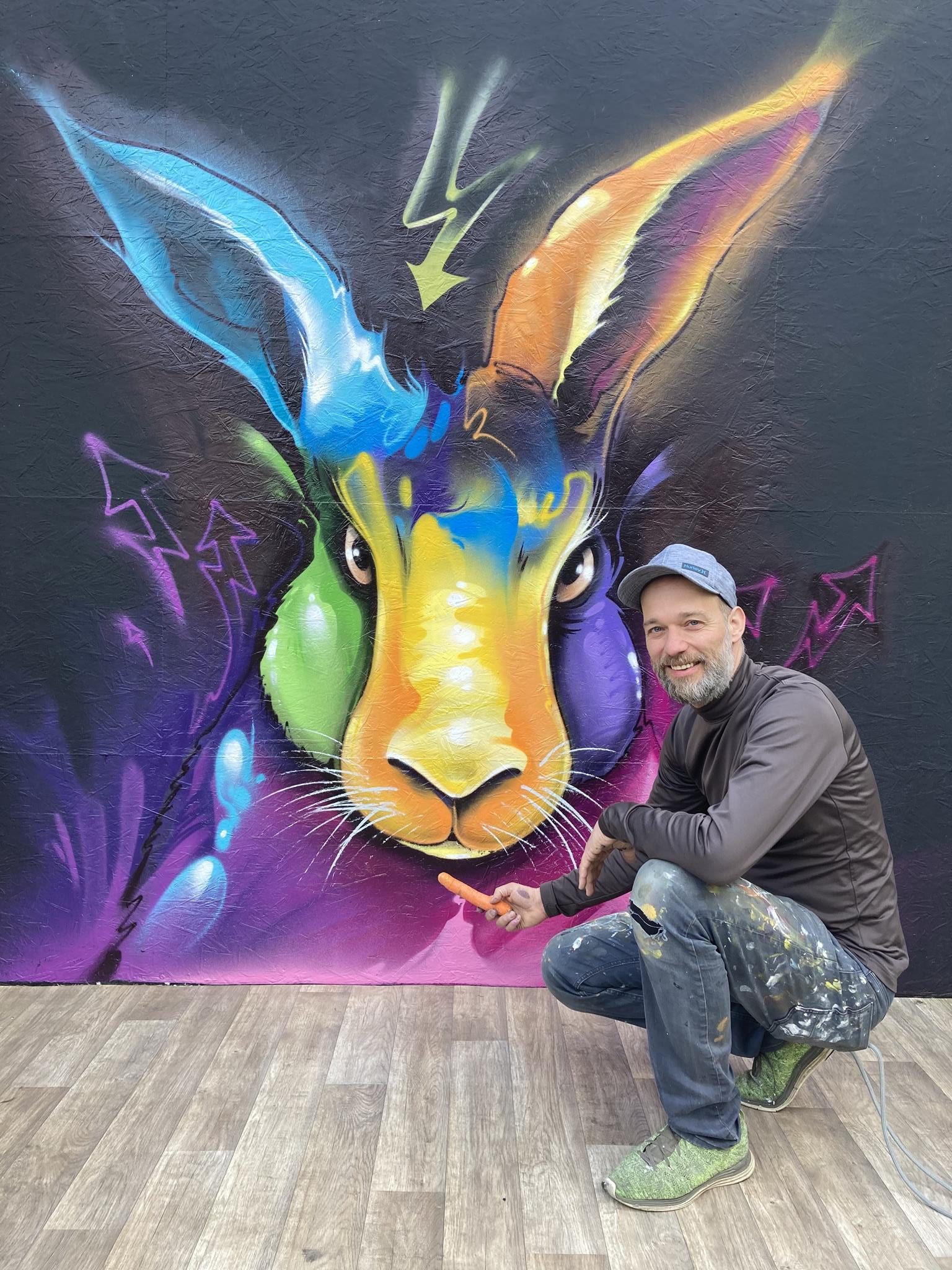
It all started in Frankfurt and Offenbach, as well the first studio is located in the Bieber district. Others followed in Berlin and Solingen, and Marcus also runs an atelier in Ibiza. He has turned his hobby into a job and is living his dream, his passion is his work. Perfect! Marcus is not only known throughout Germany as an agency for customers and as an individual artist, but also as an organizer of jams and events such as the Living Walls Festival. In the previous edition “Istanbul meets Offenbach”, a large wall was designed together with local artists and artists from Istanbul. It’s been a while since the last edition, so should be time for a new Living Walls.

The motifs from BFREE aka Artmos4 often show colorful worlds of flora and fauna, he especially likes to paint bird motifs, but also other animals. As a trained screen printer, he also uses various techniques that are actually unusual in graffiti. The results are beautiful sceneries and high quality works of art. Marcus just does his thing as he likes and lets his creativity run free. Experimenting, trying new things and developing yourself further is an integral part of this. He also communicates this regularly in graffiti workshops with adults and children.

We had Marcus as a guest on a x-wie-raus show at our super fantastic station Radio X. Of course, the airtime was far too short, so we recorded another interview about Artmos4 after the show. You can find both podcasts here, both are in German, but below you will find the conversations written down and translated into English. Additionally peppered with great photos of awesome creations from Artmos4, at the end there is also a collection with links to the already existing spots on the Frankfurt Map and the Berlin Map.
Let’s go back to the beginning first. How did you get into graffiti and painting? How did it all start?
So, of course, at the very beginning there was always the desire for creativity. I’ve always loved drawing. My grandpa fully encouraged the whole thing. And at some point the whole graffiti thing spilled over from the USA to Germany. That packed me full too. And then I started completely classically, as you might experience it now, with a graffiti workshop. That’s how it all started. That actually happened in 1992 in Offenbach, when there were a few good heads who offered graffiti workshops. And then I took part and it was just awesome. That was just the shit. And yes, I kind of stuck to it.

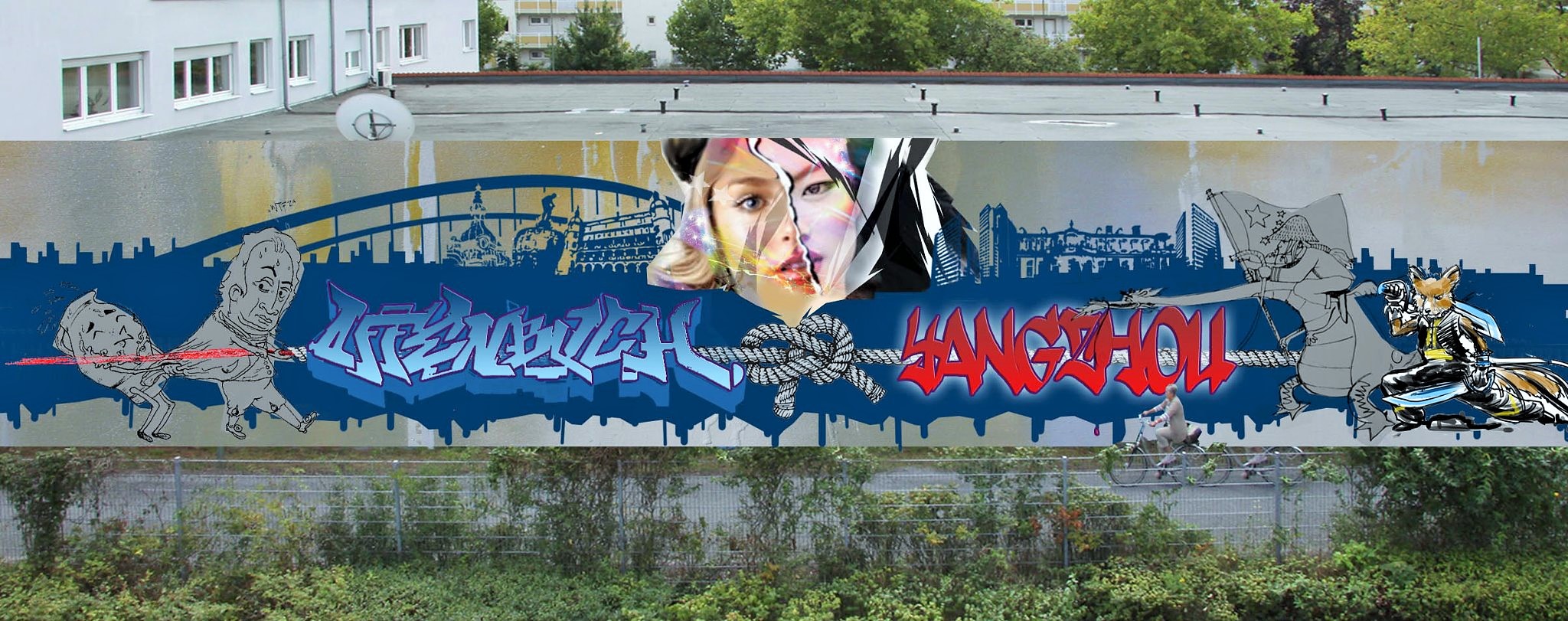
So at first you painted for yourself, your artist name is BFREE.
Yes, that’s true, but I’d had countless other names before. You don’t have to list all of them now. I already had the boys from the Soko for a visit long time ago, they were already sitting with me and we talked about everything. Well, of course, I had my times when I tried things out. From 1992 to 1997 in particular, I made the streets a bit unsafe. And then in 1997 I felt the need for more. I didn’t always want to just do something quickly, I wanted to put concepts on the wall. And then I just went to a car wash here in Offenbach and asked: Hey, you have a great wall here, let me paint something there. He thought it was super good. Me too. And so I did my first job.
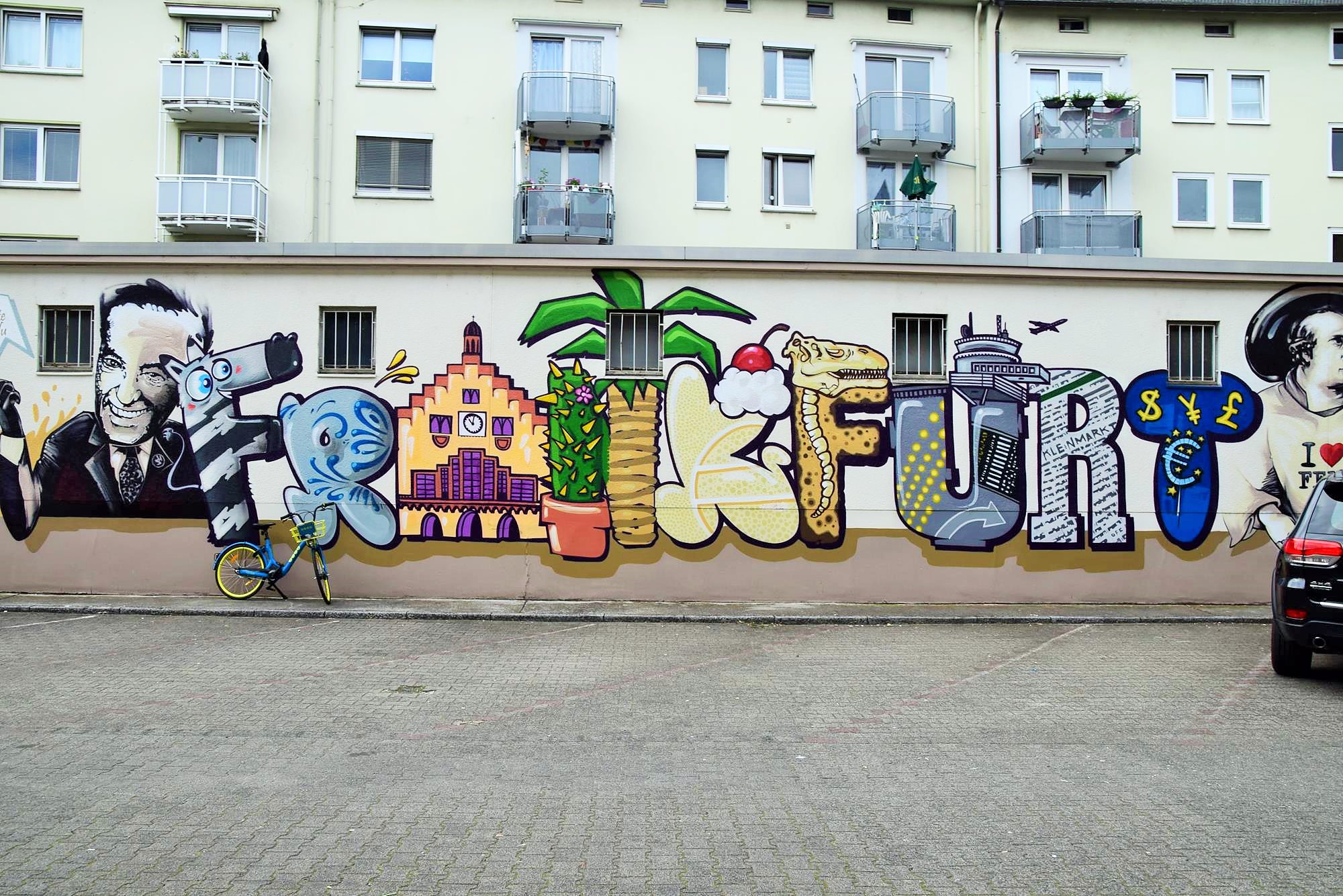
You then founded your own agency and now you are a whole team. You have a studio here in Frankfurt, one in Berlin and another in Solingen. I’ve already photographed some of your artworks here in Frankfurt, but we also have a lot of great pieces on the Berlin Map. Especially at the House of Statistics with the Corona bird. There are a lot of beautiful works from Artmos4 all over Germany.
Yes, so I choose my spots that I think are cool. And in principle it is just increasingly Berlin. Berlin is the place to be for me and I can live it out completely. I have almost more friends there than here. It’s my second living room and you simply have a lot more options in Berlin. There are a great many fallow land and a great many areas that are simply empty. And there you can just let off steam completely. I also like it bigger and you just have everything ten times. You have crazy people times ten, you have spotters times ten, you have street artists times ten, and that’s how it really gets things going. I think that’s good. I’m in Berlin about once a month and I really like it.

You came straight from painting here on the radio. So just before you had finished a new work of art and had already shown me the new photos of the new deer motif in Preungesheim. In Eschersheim you painted the waterworks building a long time ago, there at the S-Bahn station, but that has now been painted over with a lot of other graffiti.
Yes, that’s the way it is, it keeps developing. You just have to cherish and look after it a bit. If that is not done, then that is the way it is and then it expires.



You also brought some music with you, earlier we had Trettmann and now we’re going to play Police’s song “Walking on the Moon”. Why did you choose this one?
Yes, that is, Police. I once had a good buddy with whom I used to spray a lot. This is Kayle from Offenbach and he just heard Police from top to bottom. And then he got me there too. We’d had sketch battles together all night and the guy really influenced me and is really great. From that time I also take all the music with me, that was very much influenced by The Police.

The next topic would be events and festivals. Then especially the Living Walls Festival, that’s a very nice project that you also started and organized over several years with many other artists. Tell us about it. In the beginning the motto was “Istanbul meets Offenbach”.
Yes, exactly. But not at the beginning, actually at the end of the whole thing. Unfortunately, that was our last event that we did there. The first event was in 2010 and we designed a beautiful wall down at the Kaiserlei. At that time it was called “Analog vs Digital”. I’ve always enjoyed creating mottos and then inviting people who go with it. It was really funny because I invited TASSO from Merano, two Swiss, then FUEGO came over and asked: Can I paint with you? Sure! It is also possible! Then somehow the twelve of us created a huge wall. The oldschool guys were the analog people and the rest was digital. So we tried to create a little bit of contrast with our styles. And what I was really happy about was that the the artist ZIP was there. Most of them don’t even know him, but ZIP, that’s the Grandpa of Graffiti Stencil Art in Frankfurt. He has been around for ages, but nobody really knew him. I just spoke to him and said: Do you want to join in? And yes, he went along with us and completely ripped off awesome pieces. So definitely a cool guy and he was really happy too. He has drifted a bit around and was no longer really active in the Garffiti scene. He’s more like doing his own thing and he was happy to paint a wall again. So yes, I enjoy that. I enjoy bringing people together from a wide variety of areas and cultures in order to just do something big. That was the first time at the Kaiserlei and then later we did another huge event on the other side in the direction of Offenbach. Then we designed more than 3000 m² in one weekend in Lauterborn in Offenbach with over 100 artists. Then I clustered it a bit more. That means we had a corner of Frankfurt, a corner of Hanau, and an Aschaffenburg. And then the boys could let off steam. That was cool, it was a really cool event.
It’s also nice that the artists get to know each other at such events and that you can then create bigger things together. Especially these huge project walls, there are sometimes 10, 20 or 30 people involved in a single picture and then you can say, cool, we created that together. And then a second point, because it doesn’t hang locked somewhere in the museum, but is in urban space and everyone else is welcome to look at it.
Sure, that’s a nice side effect. But honestly, that’s not why I’m doing it. I just want the event. I want to hang out with people, I want to do something fat. If a grandma then sees it and says she is culturally one step further, of course, then that’s great too. But in the end I just do it for the artists who participate. Especially in Lauterborn, where we used to have such a railway line, it has now been completely torn out and it is now an industrial railway. There was a really awesome spot, we went there in the 90s and hung out and painted. It was always kind of semi-legal. And when we later painted this thing again, that was a great thing.

Sure, the old lady thinks it’s great too. But above all the fans, they know where the places are and then go to the places. There is a fan base that is specifically looking for that. But especially now in the Corona time and with the lockdowns, where there are no museums or galleries at all, art is becoming more and more important in urban space and it also shows more and more clearly what you can actually do here. Many of them are only just beginning to notice what kind of great works of art there are.
I think there are also guided tours in Frankfurt. In Berlin anyway. There are also certain maps where you can look at all of the individual spots. I’m just noticing it in Berlin, it’s really hard what is happening around it. You used to spray and then there were people who supported it. But now it has really grown. And there are really a lot of normal people who then go to some lost places and have themselves photographed there in front of some street art. They don’t even know what it is, but they just think it’s awesome. So sure, it’s growing. The periphery is growing. The surrounding area is growing, that’s really an exaggeration.

At the Living Walls event the motto was “Istanbul meets Offenbach”. How did Istanbul come about? You also said that you then had the artists flown in.
Come on! Offenbach and Turkey belong together! And precisely where we held the event, that can already be called Little Istanbul. We have a small mosque, a Turkish supermarket, a large Turkish bakery and yes, that just fits. Why should I get someone from Uzbekistan, that just fits in with the Turks. I also had good contact, since I had been to Istanbul before. Got to know one or the other there and thought I’d come to Offenbach. We’re open to events like this, that’s great. That’s the way it was and it worked out really well.

You also said earlier that the festival then received a little too little support?
Yes, but from me. So from my side. For three or four years I haven’t thought so much in the direction of Living Walls, because all the time I was somehow always having different things to do and was involved in other projects. But I thought stop now I’m actually in the mood to do something cultural again. Sometimes it is so that you only know in retrospect what that gives you. And it was always a huge enrichment for me. I got to know people from other countries and even here from the Rhine-Main area. And it’s also nice to just do something together. That’s better than just cooking for your own soup. Unfortunately, too many do that. Everyone is always out for himself. You notice that again and again, everyone just wants to do their own thing. But this Living Walls is simply together, together, we’re doing something big. I think these Exchange things are just cool. I was with Akim Walter in Russia in Moscow and in Quanzhou or in Hong Kong and did various projects with them there. That has always flashed me and I think these Exchange things are good. So that means you bring people in and work with them and then you go there and do something with them too. I think this exchange is great. It really inspired me.

For a festival like this, of course, a lot of personal work is necessary, all the hours of communication with the people and the setting up of the ladders, the equipment and the paint. But that is always a sum of money and there is often a lack of support. The city does something sometimes, but it would be good to have more support at events like this, then that makes it easier.
Yeah! I’m going to release my Bitcoin account now. Send me money, then I’ll do projects like this. Little fun. But yes, as you already said, that’s the way it is, nothing going on without moss. Everyone complains that it shouldn’t be about the money. But unfortunately, in the end, it’s always because of that. If I now get 5000 euros from a city, then I can do a project. Then I can buy cans and then I can have the artists come and they don’t have to finance everything themselves. That’s obvious. You can do it once, but you can’t expect people to do everything for free all the time. So there has to be money for it. I’m also currently cranking up a few things so that we can do something again in Offenbach. I also have very good contacts there, and they’re always good at it. In Berlin I also have someone who is on fire and then we do it. Five people from Berlin spray with five people from Frankfurt and Offenbach. Then we’ll do a wall here together and we’ll do the same in Berlin. By the way, there is a lot going on right now. There are a lot of walls and things are going just right there.

People who have the idea are welcome to contact you. You are a doer there, you are good at organizing and you are welcome to write to.
Yes, so at the end of the day, it’s actually about walls. It’s always very practical. I recently had an article in the Offenbach Post that people who have beautiful walls can contact me and just let me know. And what happened then? A tennis court had reported, they had a tennis wall that you can play against on your own and I could have sprayed it. So I’m sorry, no, don’t go. It has to be something representative and big, then you can do a nice project there if you give us the freedom.

How can others find you on the internet? There are a lot of great works on your website, there are also some interesting video clips.
The simplest is the website at www.graffitiauftrag.org. It’s easy to remember. This is our website, there is a contact form and you can simply get in touch. Otherwise at www.artmos4.de. It leads to the same website. But that’s always difficult with the „4“ at the back. Otherwise, I’m also on Instagram and Facebook, where I regularly post content.

You have been doing graffiti for a long time and you can describe a certain development there. When you look back at how graffiti used to be and what it is now and then maybe the keywords with legal to illegal or subculture too commercial. It used to be completely different and almost frowned upon when you started doing things or assignments legally. A lot has changed there and new generations have come.
A little has happened there. At the latest when people noticed that you can really earn money with it. So that you can paint a kindergarten and take some money with you. That changed a little bit by bit. That was frowned upon in the past. I think with Artmos4 I was a bit of an enemy for many, because everyone thought, oh my God, he’ll destroy everything. This is a sell out or something similar. But not at all. I think it’s important to reach a lot of people with what you do. And the more you achieve, the better it actually is. The more you can get people excited about the whole thing, the better it is. If I adapt a little, it will only be to maybe create a sensitivity for graffiti.
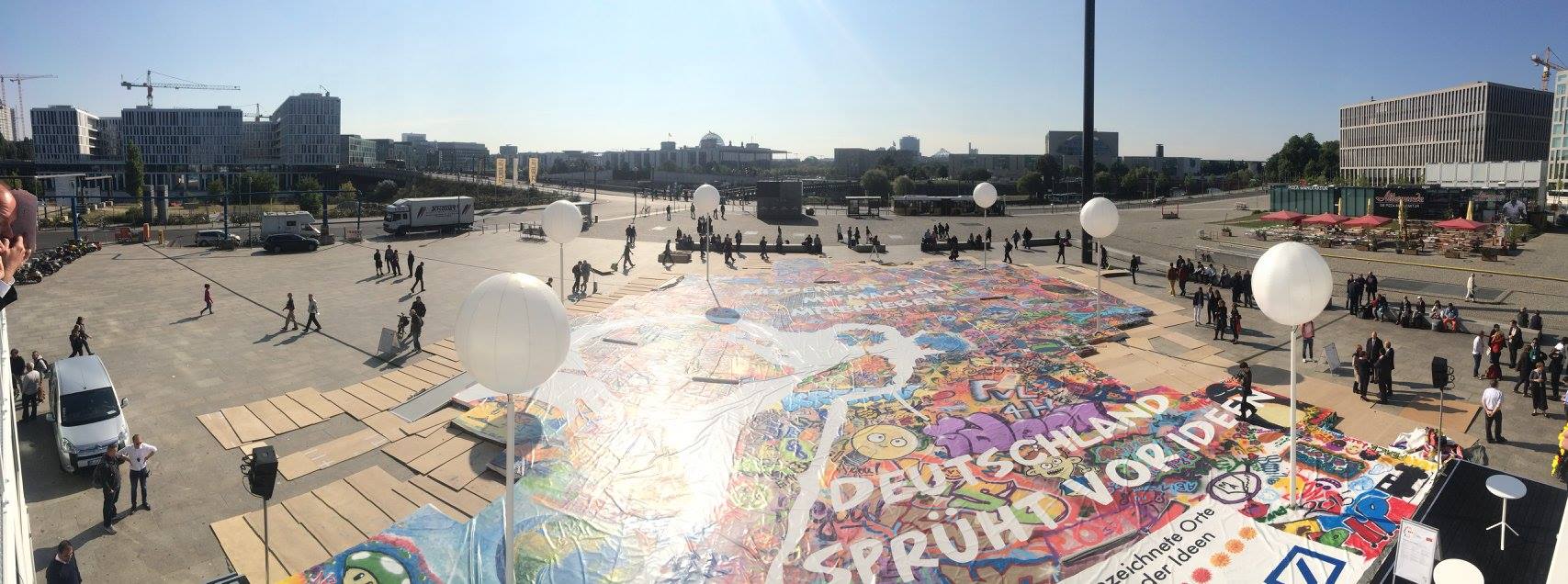
Paradox von der Berlin Kidz once said that in a cool interview. So actually it doesn’t matter what is done, but anything that brings things forward is good. As long as it brings graffiti, art and human expression to the fore in an artistic way, as long as it is good. Why and why the work is made is another question, but the work of art itself must be viewed separately. It’s a created art. Whether someone was paid for it or not, that doesn’t mean that the picture will be worse then.
No, of course not. At the end of the day, you can always argue about what art is and you can argue about whether it is art or craft or handicraft. I think if you start to put a lot of love and passion into it, then it will be good, then it will be okay and then it will be awesome. Because in the end we create something, people can deal with it and we bring life and color to the city. It’s always a thing of living and letting live. Let people just do that. So what did you do back then when you did any artistic commercial work. You just did a nice thing.


And then you have to pay for the cans, you have to pay for the equipment and somehow you have to make sure that you get your rent in. If you manage to earn a living with your art, then it’s much better than if you were to work in a bank now and only do it on the side. So you have a lot more time for art.
In any case. So for me the best job ever. I never want to swap anyway and I am so happy to have been doing that for 25 years. What more could you want than to have a red carpet rolled out all the time. People just think it’s awesome, it’s fun doing things like that with people. You also meet incredibly blatant people. Last year I did a workshop with David Beckham. It was just so cool to get to know someone like that. And that just got this whole graffiti thing up. The guy has an aura, that’s just an exaggeration. Horny guy. And he thought it was all awesome with graffiti and the workshop. He came to Berlin, he really wanted to spray, they called us and everything was clear. David, let’s spray together. Then we designed a graffiti with him. Sure, that wasn’t the mega thing, because he couldn’t do much. We taught him a little bit, including the camera, but the guy was just interested. It’s awesome to be able to give that to someone.

Did you get crossed a lot in the beginning? So what if you did legal things that haters sprayed over shortly after? Or did that not happen?
Rather less. If so, then maybe they were on a bad drug. Well, it has enough walls to do something, so that’s my attitude. At least here in the Rhine-Main area. In Berlin it’s something else again. If you go over the most blatant illegal things, then you have to deal with someone saying: Hey sorry boy, I risked my ass here and you are now somehow painting a flower over it, that doesn’t work. So I saw at the Living Walls Festival that there are a few old works at the Kaiserlei. So I really tried to call the old guys and get them on board. I said, hey, we’re doing a big campaign, everything will be canceled, we’re going to put something new on it, do you want to come and take part? And yes, most of them were there. So you can’t pick them all up, but I try to take it into account. But I think it’s still ok here in Frankfurt.

![]()
End of the studio visit on Radio X – Start of the second interview recording
![]()

Tell us a little bit about your travels. You have traveled an incredible amount, seen and experienced a lot, and art was always there too. So there are works of art of yours around the globe too.
I mean my art is me. Of course, art is always there and I’ve been trying to push that more and more recently. You can of course get closer to people through culture and art and you get to know a country in a completely different way if you catch them that way, of course. And of course you catch them with your art. Last year we were still in Thailand and Vietnam, so I had to do with a German who is very involved there in the form of charity. So he does great things in terms of orphanages and he had a large orphanage in Bangkok, which he also runs himself. I spoke to him and said, let’s do something together. And then I flew to Thailand to Bangkok and organized and designed a large wall with him. In that case I painted a big elephant. Thailand and elephants, that is one of those things and that is the symbolic animal. I also sprayed an elephant on a water tank in a monastery. And of course, that was awesome! I’ve had really great times there. We stayed at the monastery and there we met the third most important monk in Thailand. We sat under him submissively, which is a must in Thailand, so that you sit under it. And he gave us real probs and thought it was really cool. If Corona hadn’t got in the way now, then I would probably be back in Thailand because the girls‘ house has opened and we should have done more. But yes, if the whole thing is now slowly or not slowly, but if that ends at some point, then I’ll be there again and paint there again.

What is also very nice about it is that it is not just any wall or building, but it is also integrated into a social project and something that helps people, i.e. an orphanage. It’s even nicer to do something for it.
Yes, in any case. When you then see that your own art has also brought something good, wow, what more could you want.

In the end, it’s not just the art itself that people look at, because you highlight the whole thing. By throwing another perspective on it for people who may not be so concerned with the orphanage, but are interested in art, but then also get information about the orphanage. So it is not only an embellishment, but also an additional help for such places to get a little more attention.
Yes, just moderately social media. But I don’t think that someone will come by now, it’s off the beaten track. But for them it was something really big when a foreigner comes by and paints the wall nicely for them. That was awesome for the children there too. As Europeans, we are already something exotic and special in such countries, and when we paint something there, it gives them strength. It is very clear. And I’ve already dealt with the topic and thought about what could be the right one for. The first time it was the boy’s house. So I just thought, something strong, an elephant, so such a big, cool, strong elephant that comes around the corner with a Thai tattoo. They thought it was cool that a guy from Europe would paint such a picture for them there. That’s something cool.

Have you also collaborated with local artists?
Yes, I bought cans and that’s when I met a few artists who gave me the cans. But actually not really. It always happens, but now there was nothing. In other countries there were more collaborations, especially in Brazil. A few years ago I was in Brazil and painted there in Salvador de Bahia. That was a completely different and blatant experience because the graffiti there is not like it is here, that it is always illegal if you paint something there. That more or less didn’t matter. So no matter where we went, we could paint there and that was fine. The other people thought it was good too. During the day we went to any wall there, painted and the residents and passers-by celebrated it. Even the police came by and asked us what we were doing. So we’re going to paint a picture there. They then said, oh nice, we’re happy. But then it wasn’t what was scribbled, but we painted really fat pictures. But that was all great and everyone was happy. Something like that is unthinkable here in Germany. Inconceivable here, but in Colombia in Bogota, for example, it’s so unbelievable. Also in Montreal, it’s unbelievable how much is painted in these cities. Berlin is good by German standards, but in comparison it’s a joke against it. There you just paint like anything else. But who knows, that will also come soon. At the latest when all the autonomous driving and artificial intelligence take away all the jobs, then we have to think about what we can do with our time. What do we do then? Come on let’s paint a wall.

Let’s stay with travelling a bit longer, you have been to many other countries. I’m also such a travel freak, what else did you see?
So I’ve been to around 20 countries. These have now been repeated more often because we also have children. So we had decided to go to a different country every year. It started with Tunisia, but North Africa wasn’t quite our thing, then we continued with Thailand, Cuba, South America, Brazil, Venezuela, it was all very cool. But then we had the children and when they are one or two years old you don’t have to go to Patagonia with them now. We knew our way around Thailand very well and it is also a great country, then we were there more often.
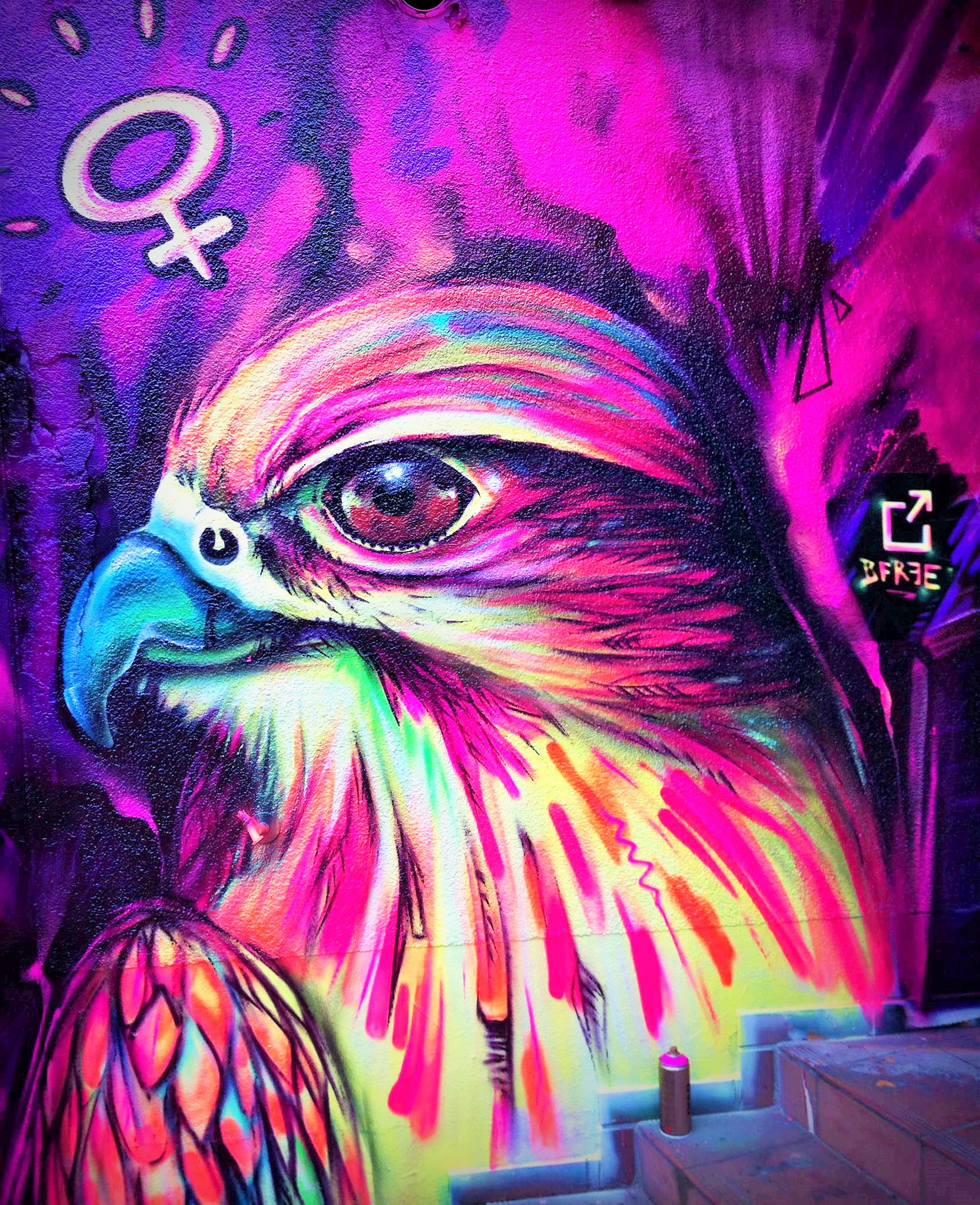
And have you always painted and made art during your trips?
Yes, at least I tried. I’ve tried again and again, but it’s not always easy with kids and the family. Well, I can shovel two or three days off, but that I arrive now and say I’m doing a project for a week on vacation, that’s not possible. So two or three days is always fine, it always works pretty well. But at some point the children don’t feel like it anymore. They are now four and seven years old. Last vacation they were three and six. So they’re still super small, but of course they think graffiti and art are awesome. Both are very different. My daughter likes to paint herself very much and the doctor wrote in the examination report of my son that he was rather disinterested in drawing. He doesn’t feel like doing it because he’s a different guy. But it’s flashy for both of them. When I come home in the evening and was painting somewhere, I always show them my pictures. They always think that’s good.

Back to Europe, you do a lot there too. So in Spain, or rather on the island of Ibiza. You are very active there and one of your websites is also called www.ibiza-graffiti.de.
Well, I just really like this island. My parents took me with them when I was little. This is a place to be. It’s not just a party there. It’s about the lifestyle there. It’s just so colorful. The hippies were there in the 70s and that’s such a hot spot, there are just people who think differently. That is a difference to Mallorca or Menorca. It’s like the island of La Gomera in the Canaries, where people are just different. It’s not that strong there anymore, only at one or two spots. But it’s awesome in Ibiza. I like that. I always try to find the places that I like and then just do more. Be it Amsterdam, be it Ibiza or Berlin or Frankfurt.

Do you have a headquarters or a studio there?
Yes, I have a small studio there. I got to know someone really great there and I do a lot of projects with him. He’s in the events industry and he’s doing really great things. So unfortunately not at the moment in the pandemic time. That’s really shit, nothing works right now and everything is totally dead. We did really nice projects for big companies. For example, for Ernst & Young, thousands of employees have rolled in and we have really done great graffiti workshops with them at the best spots ever. In San Antonio with great beaches and everything closed off just for this party and we then sprayed with them. That was just cool! I designed some canvases for some rich kids, but it was fun and cool. The great thing there is that I just do my thing. I won’t let myself bend there either and I’ve also had exhibitions where I just did my thing. And not like here, where someone comes by and says I have to paint an Audi A3 now. There I just made my style and broke it down a bit to the culture. It’s great to paint a hummingbird at 30 degrees and at a finca by the pool.

This is also a good keyword now, because we didn’t address that directly on the show. What’s your thing and your style? Earlier we mentioned something about a bird and also that about the deer, so there are often animal motifs. Describe what you like to paint and what are your motifs and themes?
It’s really difficult because I have different styles that I like to exhaust. If I basically do my own things, then I really enjoy painting fauna. I like to paint birds, they have a flow and they have feathers, everything vibrates and that’s just a really thankful thing. I am very good at transferring images to my art. Basically, I am illustrating on the wall. Other people do some nice things on the iPad, I prefer to do it on the wall. So I can paint owls, I’ll make them completely out of my head. Or hummingbirds and flamingos and something. I just have fun with it and it’s the process that makes it all. Then I’ll be there and maybe paint with someone. I want to have a good time and what am I doing? I’ll just stop my birds. I have a lot of fun with that, and in the end, that’s what it really is. I also do a lot of stencil. So I developed a kind of technique with which I transfer a raster graphic onto a wall that makes everyone wonder how it works. You think it’s printed. These are different graphics that I then put on top of each other and then I make a collage out of them. I like to make my canvases with it. Since 1997 I have also been making works with foils. That was completely unique back then. Who made any logos with foils back then? Most of them did it freehand somehow. But I am a trained screen printer and my company back then, which also had a sign painting business. That’s what it was called in the past and they also designed various neon signs. That means, they had some kind of plotter and then just plotted the things. It was clear to me from the start that when a customer comes to me and says he wants a logo for something, I don’t start and paint it by hand. Why? The logo is a logo, i.e. one-to-one in shape and color. I’m not an Indian. So if you fly to India you will see that they can really do that, really one on one. I was there ten years ago and they could do it all. But I think you’re so effective when you work with stencils. You save a lot of time and we do things like that and with a template. So that with the stencil went from logo to graphics and then to picture elements. So stencils and things like Banksy’s. These are all so things, you can use stencils for them. In workshops I always tell people, take a stencil and you will have a great result. You can do what you want there. You can be the biggest toy and still do something really good with a template.

Everything is allowed in art and there are no restrictions as to what is now art or what is not or what may and may not be used. It is always discussed and one says it is so, the other says it is so. But in the end, how you perceive the whole thing is a subjective thing.
Yes, you say that now. But that wasn’t the case at the beginning of graffiti. I can still remember back then the graffiti sprayers had a huge problem with masking something or using stencils. I have my very first painting that I sprayed, it was for a colleague. He had painted something and because he couldn’t paint like that, I painted him a „C“. But I was so unsure that I completely masked off all the outlines. But I didn’t care what people were saying. I just did it. And that has always been the case. I always really didn’t care what people say. The main thing is that I enjoy it and that I get the result that I want. That’s it. At the beginning you can’t spray or draw outlines, so you just tape it off.

Somehow you have to learn. Just like copying. Ok, then you copied something. It’s not that bad now. More likely if someone does it all the time and still after ten years. You could say, make your own style. But at the beginning, you have to start somewhere. How do you find your style? You don’t have that right from the start. First of all, you have to do, to do and to do.
Yes, you have to do it. And you always have to be open to many things. You have to be open to trying new things and bringing that up again and again. Right now today, so that’s a small example, I was with someone privately and sprayed something. But that was a damn cool underground. That was all smooth the thing. And then all of a sudden I started using a technique that is similar to the images of the moon that the Spaniards take on the ground on the Costa Brava. I looked at it decades ago and was fully flashed. A moon can be represented relatively easily. You basically spray a surface, put a pot over it, spray again and then you put a foil on it. After that, the thing looks like a moon. This is crazy and you can catch all people with it. I did that again today because the ground was so smooth. I didn’t even plan to do that. Actually, I just wanted to paint a picture and all of a sudden I started making scratches and shapes. I asked him if he had cling film there. All right, glued and painted on it. Then I made a fantasy thing out of it. That’s great because it comes with experience and the skills you’ve learned. You just try it out and don’t say, stop it, I’m not going to do anything with masking. That’s not allowed in graffiti. So in the past that was frowned upon as I said. But then at some point street art came around the corner. There’s art in there, too. It was like that before, so graffiti is graffiti. There are already rules and they are already being followed.
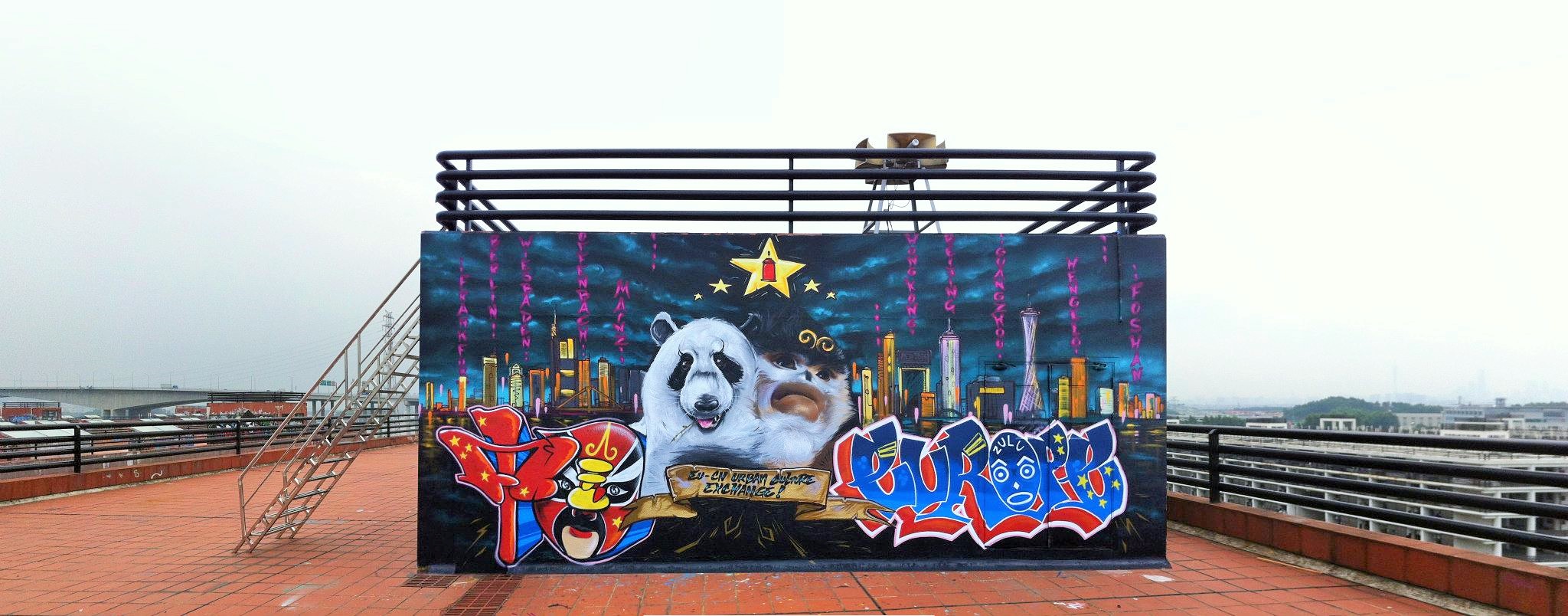
It’s a rebellion, there are political messages in there, so there is a huge part more that goes beyond art, that also encompasses many other areas. But of course it’s also art.
Yeah, well, it’s sometimes this and sometimes that. It’s fluid. One is an artist, the other is more of a rebel. For me, graffiti is more like the art of writing. But if of course someone adds a blatant character and a flashy background and even more trimmings, then of course it’s more. But if someone does beautiful calligraphy now, for me it is calligraphy. So for me, graffiti is first and foremost the art of writing, but it can be even more.

Do you do graffiti then or do you do street art? Or do you do both?
So I’m doing my thing. It’s really my thing. So everything is flowing. It’s insanely difficult to define. But why do you always have to think in drawers? Of course, that makes everything easier for people to explain. In the beginning I definitely didn’t do graffiti. I said at the beginning that I deliberately don’t do graffiti. People couldn’t have me because I didn’t do graffiti. I sprayed a car wash, I painted an underwater world because I thought DAIM was so cool and because back in the 90s he also made an underwater world. I put a Mercedes Benz in the middle and the thing was also called Atlantis and I then painted a few Greek columns on the left and right. So there was nothing with graffiti. So what do people want me, so come on. Whether I do it with a spray can or with a brush, it’s exactly the same thing that comes out of it. For a long time I actually never did any lettering, so no graffiti. I just worked with the spray can because it’s simple and clean and fast. Much has changed in the meantime and people come to me and say they want graffiti and not a photo wallpaper. OK, please. I’m not someone who then spends four hours in a square meter, I don’t feel like it. I do my thing myself, that’s my thing. I work with the can like a pencil. The whole graffiti thing came to me later. That’s actually funny.

Now we’ve talked a lot about you and your art, but Artmos4, that’s a whole team with a lot of great employees.
We are currently five in the team. It also means that we have a customer advisor and that we have someone who does the graphics and designs things on site. This is actually a completely normal, homogeneous company.
But you are the performing painter and artist?
Yes indeed. Because I just have fun with it. But I still have an apprentice who paints with me. Of course we also have a lot of subcontractors and also many other artists who work with us. Especially here in Frankfurt. When it comes to painting a photo-realistic portrait, I’m not the one for it. So of course I look for someone who does it and who then designs it.
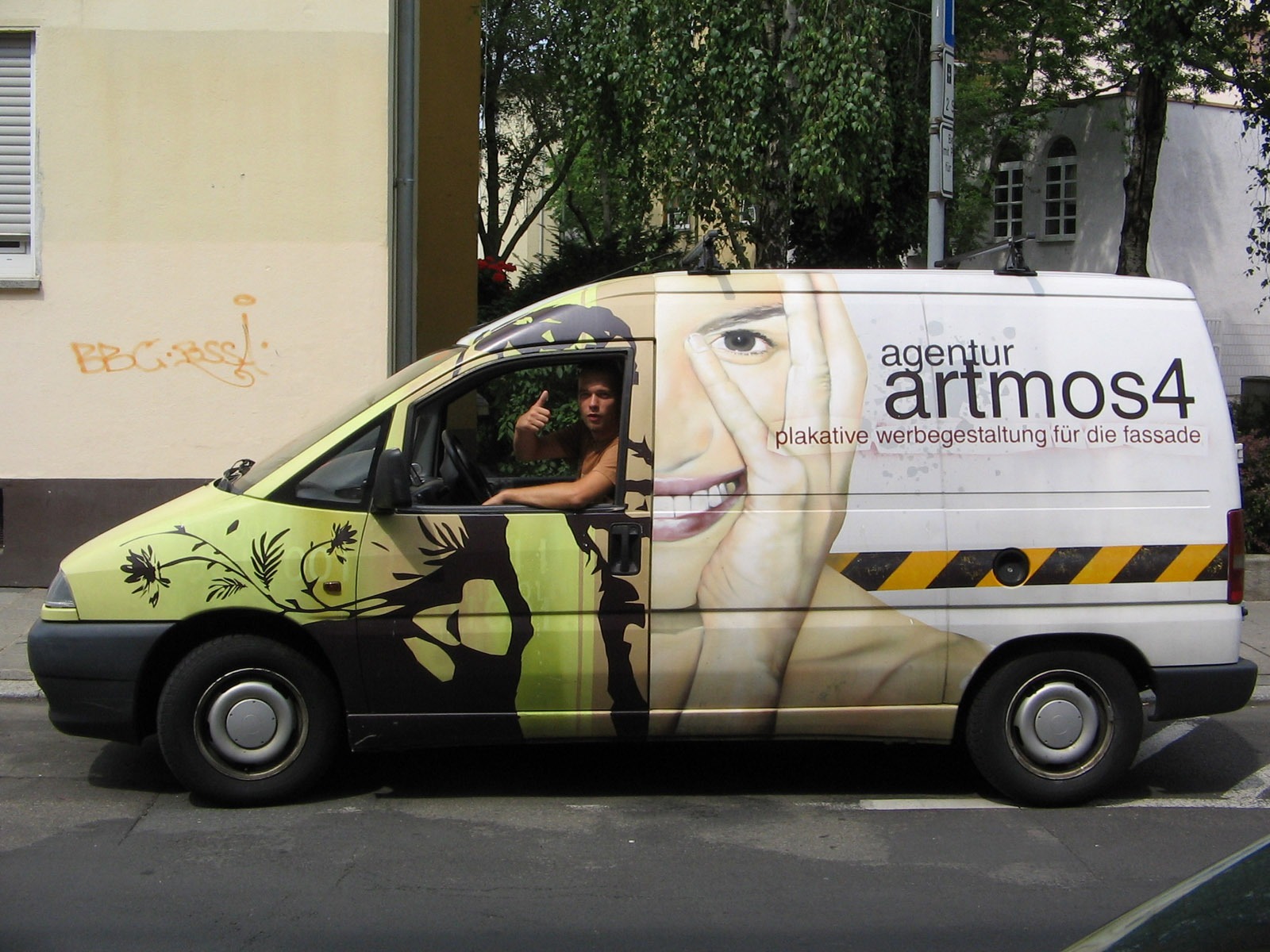
You have just given me photos of a new applicant or possible trainee who is also doing some really great works. So people can also do training with you.
Yes, exactly. We have been training people since 2000. So for 21 years now. Since then I have trained seven apprentices as media designers. First of all, people ask us what we are training them as. As a graffiti sprayer? Of course not, this is not yet a recognized profession. We always make sure that we network with people and see what’s going on, but basically it’s just training to become a media designer. I learned screen printing and then did media design and I think I can convey that quite well.

Then the name. Artmos4. So how did it come about and what is the meaning behind it?
So that comes from “atmosphere”. We create atmosphere. When I invented this name, I was 16. It’s just this game of style and atmosphere and the number 4. I kind of thought it was cool to use a German-English word. But it’s totally uncool because, in the end, I have to spell it all the time. On the phone, people don’t understand the 4 at the back. When I do something in Spain, it’s called “Artmos Quatro”. So it’s even more difficult there. So it is now as it is, so Artmos4, the letters Artmos and the number 4. But it comes from creating an atmosphere and the word atmosphere. And that’s still our thing.

The Corona time is a difficult time for all of us, but especially in the art and culture industry, everything is going well. How do you see it as an artist with regard to the art scene, the other artists and also to the development in art?
It’s a broad field, so this whole art industry. I have to say that the whole area of ??wall design and graffiti doesn’t really have any difficulties in my eyes at the moment. I sometimes have customers who come to me, we couldn’t go on vacation in the Caribbean, can you paint the Caribbean on our wall. Yes sure, I will do. How much does the vacation cost? I take the same. And in the end, it’s on the wall for a few more years. No, kidding aside. All of our events didn’t work. A third of our sales actually come from workshops and events, there was nothing there last year. So almost zero. We could do only one event that was for Herbal Life. We did such an interactive event and designed canvases. That was still with a DJ and everything was very fancy. That was cool, but that was the only event that went. If you work in this industry with events, then of course you suffered a lot and that is of course tough. That hits you hard. Fortunately, we are a bit broader and that’s why it works. For example, we have energy suppliers as customers. They are not doing so badly, they continue to make their sales and they think, oh yes, let’s design a few transformer stations by artists. And that’s going very well.

There are still many walls that are completely gray and could use some paint. I also have the feeling that a lot of people are discovering new things. Suddenly they discover the forest, which is actually not that far away, or they go for a walk or bike a lot more. Sometimes they are very simple things, and suddenly you discover a small stencil figure that has been standing at the entrance of the bakery for twenty years, but it is only now that they really notice. It also has positive effects that people are looking at other things and noticing other things. It’s not that bad at all.
There are a lot of people who might say, oh my god, what’s he talking about now. But if it’s only been a year or two that we have this problem, then for me it has more positive sides than negative. We’re all getting down a bit. We meet the good people, we come to each other, we are with the family and with the children. We do kiosk tours, which is cool and we don’t always have to party and all that. So not always. It’s difficult, but I’m getting on well with it now. But we could all think about the fact that our lifestyle is not necessarily the right one. If that works, that’s good. So if all of this is over at some point and people then say, stop for a minute, so do I have to do this now? Do I have to overdo this now? Do I have to do more and more and more? That’s the thing. And when that happens, it’s a success, and if not, the same chaos is likely to return soon.

Another look into the future. So something’s still up for this year, do you have anything planned?
Yes, I’m doing a very cool project again in Berlin right on Alexanderplatz. It will be a huge grid design with foils. It’s going to be incredible. I also want to do a Living Walls project again so that it doesn’t fall asleep either. And I also want to work more with artists again, but also do more things of my own and not always just applied things. So that’s it. Otherwise we just have to wait a little longer and see what comes and how it develops. It’s always crazy. At the beginning of the year you always think about what’s going to happen and it’s always overwhelming. There are crazy projects, interesting projects and interesting people coming back. So it remains very exciting.

![]()
Artworks from ARTMOS4 on the Frankfurt Map
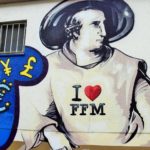





![]()
Artworks from ARTMOS4 on the Berlin Map











![]()

![]()
INFOTHEK
![]() Artist: ARTMOS4 – BFREE – MARCUS DÖRR
Artist: ARTMOS4 – BFREE – MARCUS DÖRR
![]() Email: kontakt@artmos4.de
Email: kontakt@artmos4.de
![]() Rhein-Main-Area: +49 (0) 69 / 98190808 – Berlin & Solingen: +49 (0) 171 / 8485039
Rhein-Main-Area: +49 (0) 69 / 98190808 – Berlin & Solingen: +49 (0) 171 / 8485039
![]() Adress Rhein-Main-Area: Oberhofstraße 27, 63073 Offenbach am Main
Adress Rhein-Main-Area: Oberhofstraße 27, 63073 Offenbach am Main
![]() Adress Berlin: Crellestraße 15, 10827 Berlin
Adress Berlin: Crellestraße 15, 10827 Berlin
![]() Adress Solingen: Merscheider Straße 19, 42699 Solingen
Adress Solingen: Merscheider Straße 19, 42699 Solingen
![]() Website: https://www.graffitiauftrag.org
Website: https://www.graffitiauftrag.org
![]() Facebook: https://www.facebook.com/artmos4
Facebook: https://www.facebook.com/artmos4
![]() Instagram: https://www.instagram.com/artmos_4
Instagram: https://www.instagram.com/artmos_4
![]() Twitter: https://twitter.com/artmos4
Twitter: https://twitter.com/artmos4
![]() Flickr: https://www.flickr.com/photos/artmos4
Flickr: https://www.flickr.com/photos/artmos4
![]() Youtube: https://www.youtube.com/channel/UC3-W2hzU6s7Ll7UEbtXeluw
Youtube: https://www.youtube.com/channel/UC3-W2hzU6s7Ll7UEbtXeluw
![]()
![]() Event: LIVING WALLS
Event: LIVING WALLS
![]() Website: http://www.living-walls.org
Website: http://www.living-walls.org
![]()
![]() Photo Credits: Artmos4 – Holger Peter / PeterEatAndArt – Vagabundler
Photo Credits: Artmos4 – Holger Peter / PeterEatAndArt – Vagabundler
![]()

![]()
![]()
MORE STREETART MAPS FROM GERMANY
>>> Streetart Map Berlin <<<
>>> Streetart Map Bremerhaven <<<
>>> Streetart Map Dresden <<<
>>> Streetart Map Frankfurt <<<
>>> Streetart Map Hamburg <<<
>>> Streetart Map Insel Poel <<<
>>> Streetart Map Hannover <<<
>>> Streetart Map Heilbronn <<<
>>> Streetart Map Munich <<<
>>> Streetart Map Rheine <<<
>>> Streetart Map Wiesbaden <<<
![]()
MORE ARTICLES ABOUT GERMANY
>>> Graffiti Mag MAINSTYLE <<<
>>> Stencil Artist TONA <<<
>>> Das Dreckige Dutzend <<<
>>> Sculptor Pit Ruge <<<
>>> Dosenkunst – Jörg Rudolph <<<
>>> Kollektive Offensive <<<
>>> Urban Artist AUTARK <<<
>>> Sprayer CESAR ONE <<<
>>> Filmmaker Bernd Lützeler <<<
>>> Lupus Alpha – Calligraffiti <<<
>>> Firedancer Cassiopeia <<<
>>> Collagist DeePee <<<
>>> Sprayer ARTMOS4 <<<
>>> Painter Serkan Goeren <<<
>>> ElectroClassics – THE OHOHOHS <<<
>>> Painter Frau Fenster <<<
>>> Photographer Niko Neuwirth <<<
>>> Performance – Dirk Baumanns <<<
>>> Graffiti Artist RAWS <<<
>>> Hannover Glocksee <<<
>>> TO5Z <<<
>>> Andreas Weingärtner <<<
>>> Sprayer BERK <<<
>>> Nashi Young Cho Jazz <<<
>>> AnniMalisch Techno <<<
>>> Tula Trash’s Trashland <<<
>>> Performer Tamara Zippel <<<
>>> Painter Angelika Grünberg <<<
>>> Kreativnomade Sam Khayari <<<
>>> Toy of the Ape <<<
>>> Painter Jay Gnomenfrau <<<
>>> Photographer Tom Hoenig <<<
>>> Frankfurt – Pillar Paradise <<<
>>> Graffiti Weißwasser N3M <<<
>>> Bochum Kings Wall <<<
>>> Asylum Domjüch – Artbase <<<
>>> CD Kaserne Celle <<<
>>> Combo Karlsruhe <<<
>>> Hidden Treasure Festival Bremen <<<
>>> Urban Art Düsseldorf <<<
>>> Bergwerk Grube Wohlfahrt <<<
>>> Völklinger Hütte <<<
>>> Summa Madnezz <<<
>>> IBUG Flöha <<<
>>> Fritten Freddie <<<
>>> Dave the Chimp <<<
>>> AJZ Talschock Chemnitz <<<
>>> Abandoned N*Dorphinclub <<<
>>> Wolfsburg Graffiti Jam <<<
>>> Hola Utopia! Festival <<<
>>> Braunschweig Westbahnhof <<<
>>> Fürth – Europakanal <<<




















